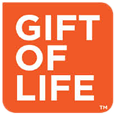If you are a healthy adult between the ages of 18-35 you are in the ideal age bracket to become a donor.
You need to hold a valid Medicare card and be willing to donate anonymously to any patient in the world. However, ABMDR donations are always collected in Australia so you don’t need to go overseas.
Exclusion Criteria Includes:
- Thalassaemia major, sickle cell disease, Fanconi anaemia or haemophilia
- Organ or bone marrow transplant
- Stroke or heart attack
- HIV (human immunodeficiency virus) or HTLV (human T-cell lymphotropic virus)
- Any past history of cancer, with the exception of two minor skin cancers – basal cell carcinoma (BCC) and squamous cell carcinoma (SCC). Pre-cancerous conditions like carcinoma in situ of the cervix are acceptable.
- Any history of severe autoimmune disease. Serious autoimmune disorders include:
→ Systemic lupus erythematosus
→ Multiple Sclerosis
→ Rheumatoid arthritis
→ Type 1 diabetes mellitus
→ Ulcerative colitis
→ Crohn’s disease
→ Ankylosing spondylitis
→ Scleroderma
→ Sarcoidosis
→ Guillain-Barre syndrome
→ Immune thrombocytopaenic purpura
- Minor autoimmune diseases may be acceptable, including:
→ Psoriasis
→ Vitiligo
→ Alopecia areata
→ Coeliac disease
→ Hashimoto’s thyroiditis, if thyroid function is stable on replacement medication
→ Grave’s thyroiditis, if thyroid function is stable after treatment
→ Pernicious anaemia, if successfully treated
→ Sjoegren’s syndrome, in the absence of serious auto-immune diseases
If you have any questions about these criteria contact us at info@giftoflife.org.au
Additional information:
Donors who have resided in the UK, travelled overseas, gotten a tattoo, engaged in intravenous drug use or had male-to-male sex can join the Registry and become a donor.
However, donors recruited to the Registry through the Australian Red Cross Lifeblood may still be required to meet their specific eligibility criteria. Please refer to the Lifeblood eligibility criteria for more information.
